A concave mirror forms real image of a point source lying on the optical axis at a distance of 50cm from the mirror. The focal length of the mirror is 25cm. The mirror is cut in two, and its halves are drawn at a distance of 1 cm apart in a direction perpendicular to the optical axis.
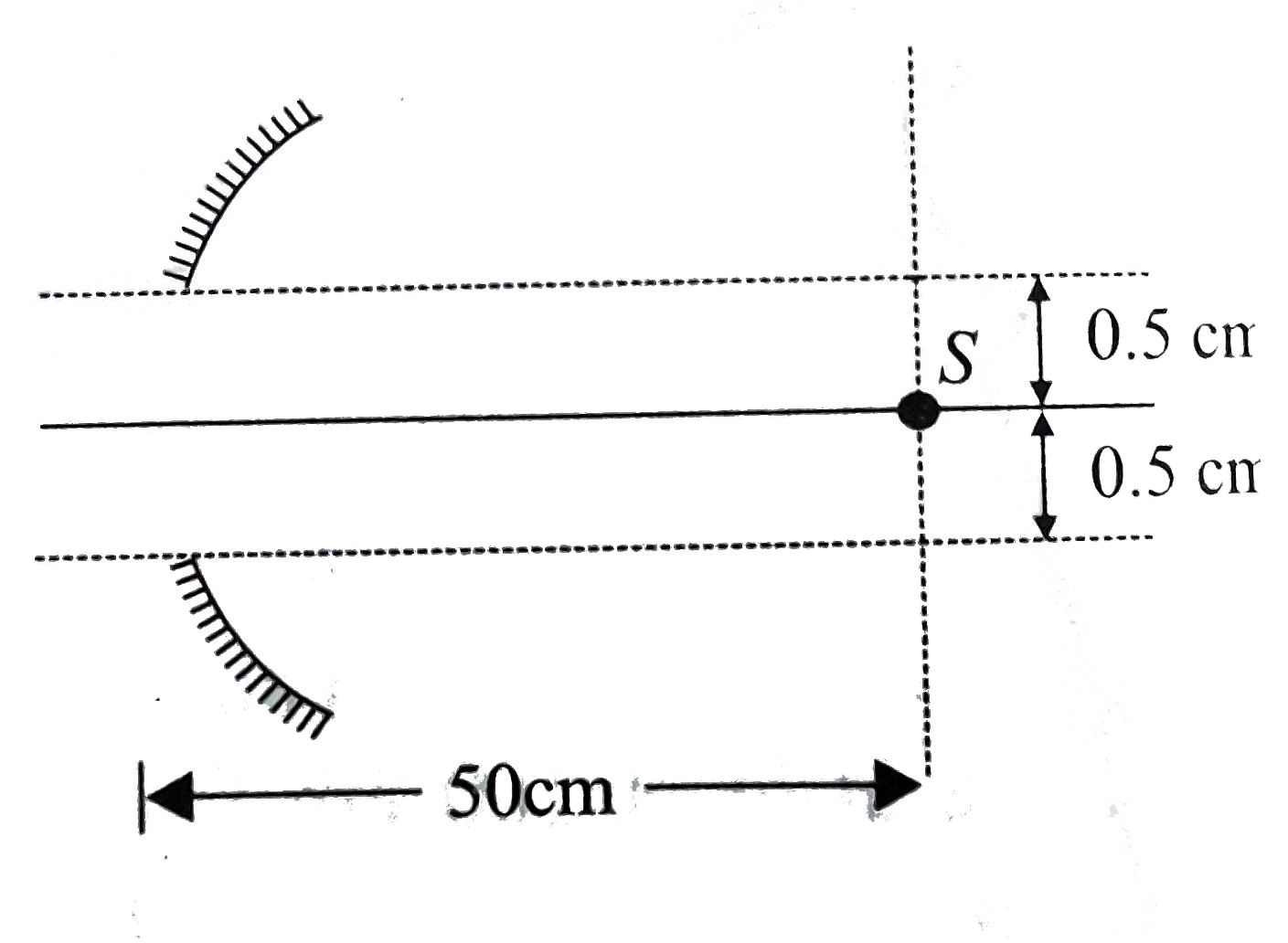
Q. In the given situation, if the two halves are each rotated (before being separated) about S by , with reference to original position, then the distance between the two images will be

0.5cm
2cm
1cm
zero
The correct Answer is:d.
Both the mirrors will be having the common object at their center of curvature. Hence the image position also coincides.
Topper's Solved these Questions
- BOOK - CENGAGE PHYSICSCHAPTER - GEOMETRICAL OPTICSEXERCISE - Integer15videos
GEOMETRICAL OPTICS
- BOOK - CENGAGE PHYSICSCHAPTER - GEOMETRICAL OPTICSEXERCISE - Archives7videos
GEOMETRICAL OPTICS
- BOOK - CENGAGE PHYSICSCHAPTER - GEOMETRICAL OPTICSEXERCISE - Assertion-Reasoninig2videos
GEOMETRICAL OPTICS
- BOOK - CENGAGE PHYSICSCHAPTER - FRICTIONEXERCISE - QUESTION BANK1videos
FRICTION
- BOOK - CENGAGE PHYSICSCHAPTER - GRAVITATIONEXERCISE - Question Bank39videos
GRAVITATION
Similar Questions
Concave mirror forms the real image of a point source lying on the optical axis at a distance of 50 cm from the mirror. The focal length of the mirror is 25 cm. The mirror is cut into and its halves are drawn a distance of 1 cm apart in a direction perpendicular to the optical axis. How will the image formed by the halves of the mirror be arranged?
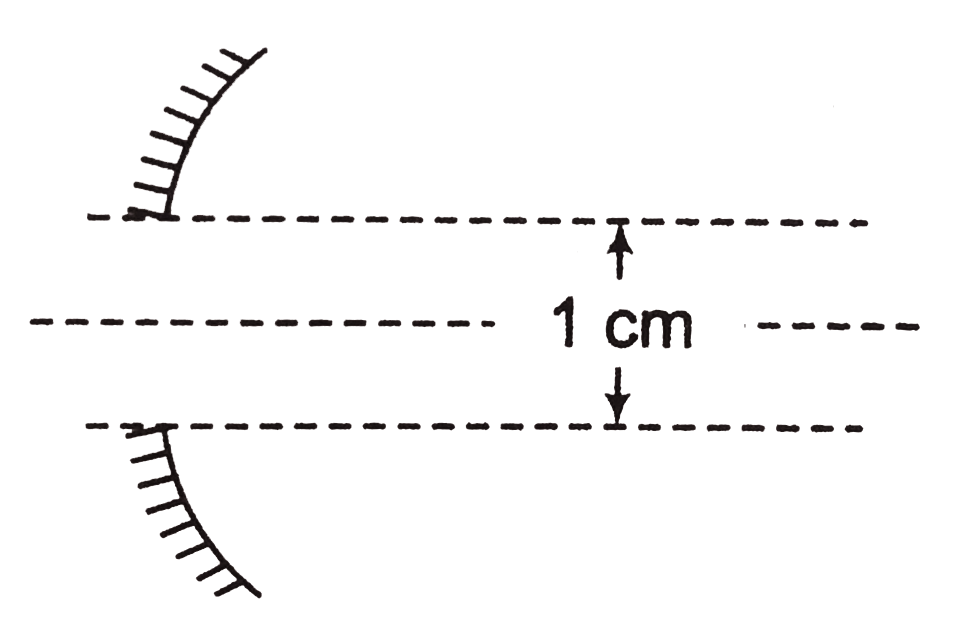 View Solution
View SolutionA concave mirror has a focal length of 5 cm. When an object is placed at a distance of 15 cm from the mirror, then the image is formed in front of the mirror at ____cm.
View Solution
Knowledge Check
- Question 1 - Select One
A concave mirror forms real image of a point source lying on the optical axis at a distance of 50cm from the mirror. The focal length of the mirror is 25cm. The mirror is cut in two, and its halves are drawn at a distance of 1 cm apart in a direction perpendicular to the optical axis.
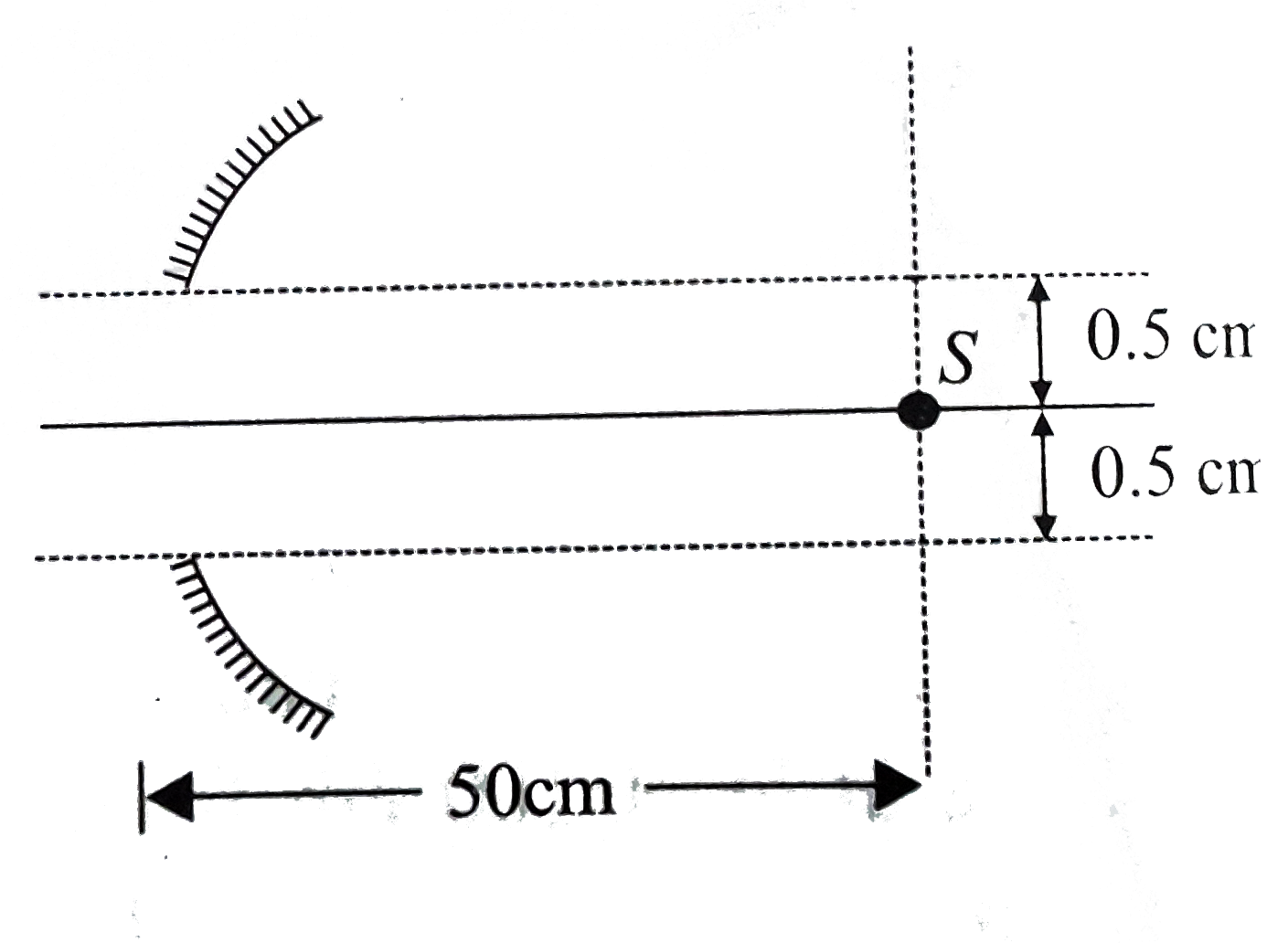
Q. The distance between the two images formed by the two halves of the mirror isA0.5cmB1cmC1.5cmD2cm - Question 2 - Select One
A concave mirror forms real image of a point source lying on the optical axis at a distance of 50cm from the mirror. The focal length of the mirror is 25cm. The mirror is cut in two, and its halves are drawn at a distance of 1 cm apart in a direction perpendicular to the optical axis.
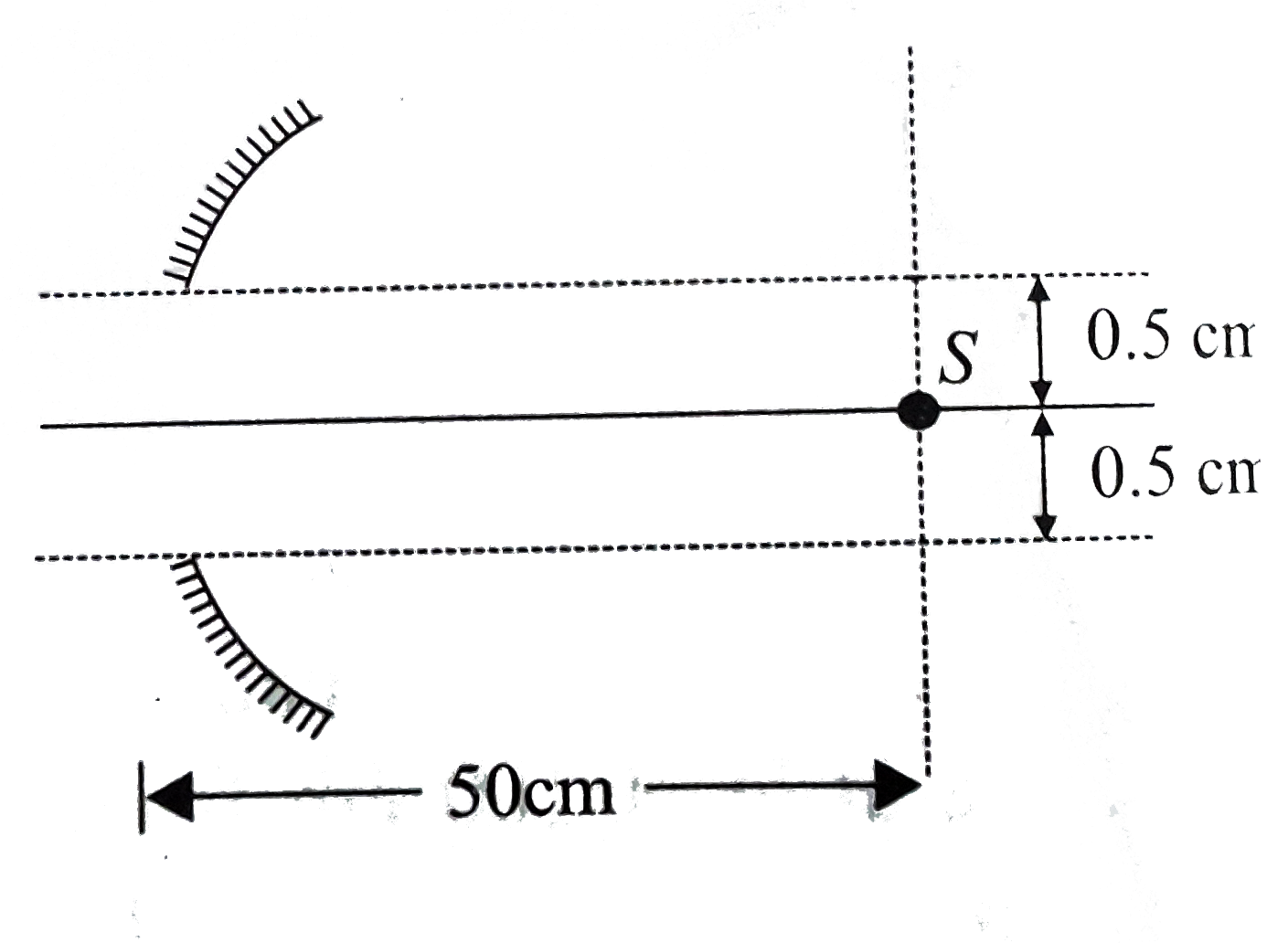
Q. Two statements are provided. Choose which is true and which is false.
Statement I: Image formed by half cut mirror has just half the intensity as that of the intensity of image formed by complete mirror.
Statement II: More the lateral separation between the two halves of the mirror, less will be the separation between the two images, as show in the given situation.AT,TBT,FCF,TDF,F - Question 3 - Select One
An object is placed at a distance of 30 cm from a concave mirror and its real image is formed at a distance of 30 cm from the mirror. The focal length of the mirror is
A15 cmB45 cmC30 cmD20 cm
An object is placed at 20 cm from the pole of a concave mirror. It forms real image at a distance of 60 cm from the pole. Find the focal length of the concave mirror.
View SolutionA concave mirror of focal length 20cm forms a real image of a point object at O a distance of 40cm from the mirror. The mirror is cut into two halves, which are drawn 1.0cm apart in perpendicular direction, as shown in Fig. 6(APC).2. How will the two halves of the mirror produce the image of the point object at O ?
View SolutionA concave mirror has focal length 15cm. If an object is placed at a distance of 30 cm from the mirror, then image formed by the mirror lies at a distance (from the mirror)
View SolutionAn object is present on the principal axis of a concave mirror at a distance 30cmfrom it.Focal length of mirror is20cm
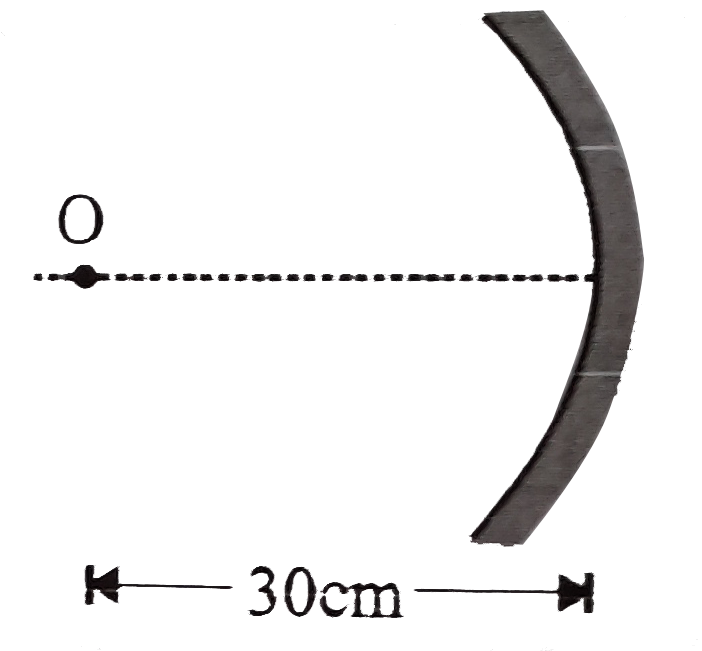
Image formed by mirror isView SolutionAn object is present on the principal axis of a concave mirror at a distance 30cm from it. Focal length of mirror is 20cm.
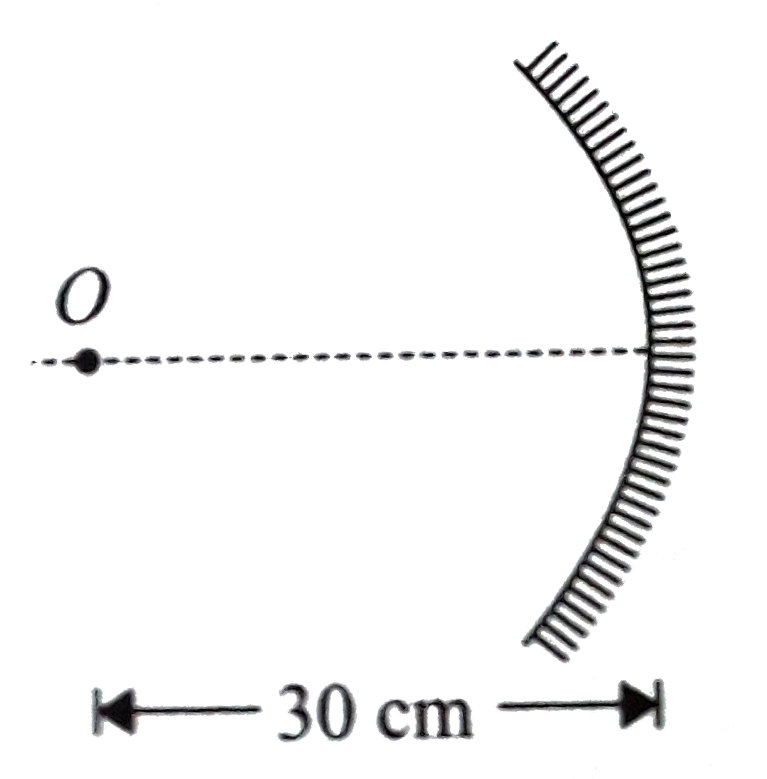
Q. Image formed by mirror isView Solution

